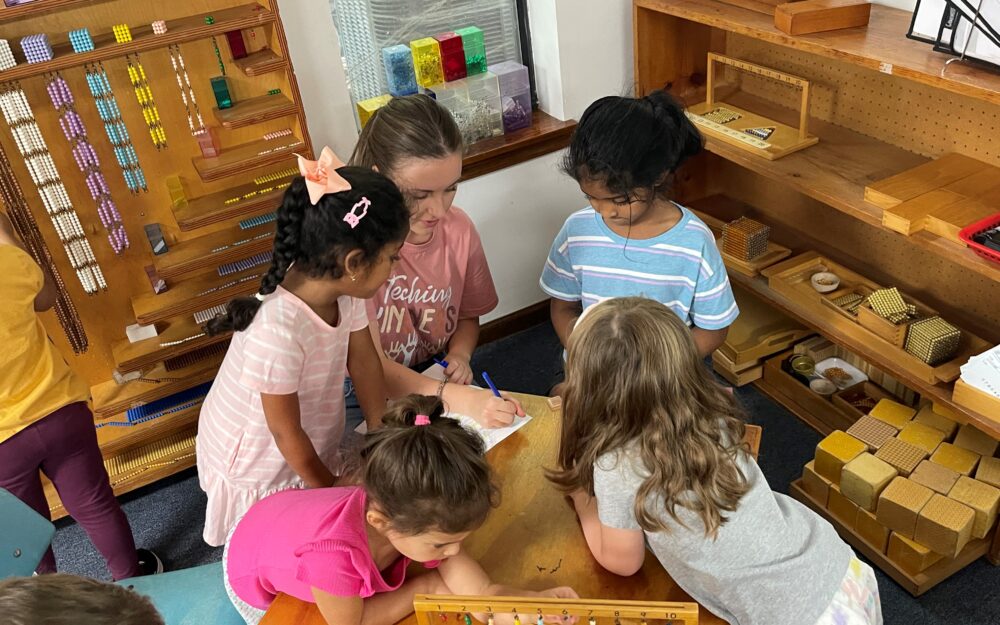Primary
The Montessori classroom is a “living room” for children. Children choose their activities from open shelves with self-correcting materials and work in distinct work areas – on tables or on rugs on the floor. Over a period of time, the children develop into a “normalized community” working with high concentration and few interruptions. The classroom includes the following components:
Practical Life
The practical life exercises enhance the development of task organization and cognitive order through care of self, care of the environment, exercises of grace and courtesy, and refinement of physical movement and coordination.
Sensorial
The sensorial materials enable the child to order, classify, and describe sensory impressions in relation, length, width, temperature, mass, color, etc.
MATH
The math materials, through concrete manipulative materials, allows the child to internalize the concepts of number, symbol, sequence, and operations.
Language
The language work includes oral language development, written expression, reading, and the study of grammar, creative dramatics, and children’s literature. Basic skills in writing and reading are developed through the use of sandpaper letters (loose alphabet letters) and other materials, which allow children to effortlessly link sounds and symbols and to express their thoughts in writing.
Additional Learning Subjects
The child is also presented with geography, history, life sciences, music, art, and movement education, through the cultural materials.
“Line Time”
Virtually every environment will also have an elliptical line on the floor. This is generally used for “walking on the line” activities that help children develop gracefulness and for the “silence game” where children can practice sitting without making a sound. The line is also frequently used for a large group meeting area. It is here, or in some other designated area, where the class meets as a whole. Often a class will have one or two large group meetings each day. One will usually serve as an opening meeting and precede a more individualized work period, and another will serve as a closing or transitional group time preceding the next activity (i.e., time outdoors, lunch, dismissal, etc.) The group meetings may be used for large group presentations of materials, movement, and music activities, group celebrations, snacks, games, and discussions.
Adapted from the website www.MontessoriConnections.com. Used with permission

